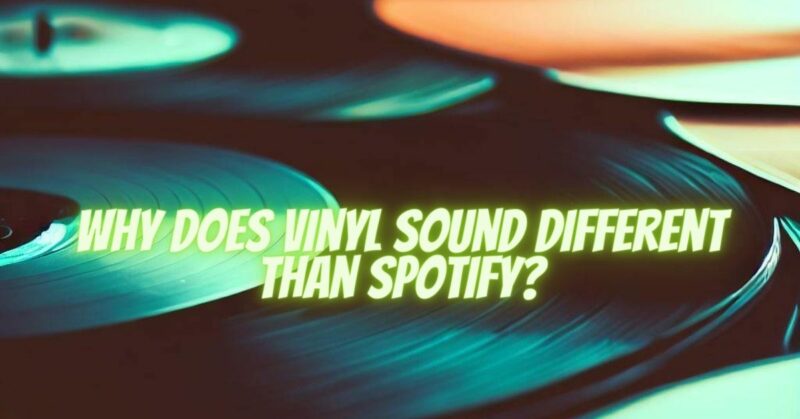The resurgence of vinyl records in recent years has sparked discussions about the distinct sound quality they offer compared to digital streaming platforms like Spotify. In this article, we explore the factors that contribute to the unique sonic characteristics of vinyl records and examine why they sound different than their digital counterparts.
- Analog vs. Digital:
Vinyl records are an analog medium, capturing sound waves in a continuous physical form, while Spotify and other streaming services utilize digital formats that convert audio into discrete numerical data. The analog nature of vinyl allows for a more direct representation of the original recording, preserving subtle nuances and imperfections that contribute to its distinct sound.
- Sound Reproduction:
Vinyl records rely on a mechanical process involving a stylus tracking the grooves on the record, physically translating the grooves’ vibrations into audible sound. This analog process can introduce warmth, depth, and a unique character to the music. On the other hand, digital formats employ sampling and quantization techniques to represent audio, resulting in a more precise, but potentially less organic, reproduction of the original recording.
- Dynamic Range and Compression:
Vinyl records typically have a wider dynamic range compared to compressed digital formats. Digital audio often undergoes compression techniques to reduce file sizes and facilitate streaming, which can compromise the dynamic range and result in a more consistent volume level throughout the music. Vinyl, being less constrained by file size limitations, allows for greater dynamic expression and can deliver a more natural and dynamic listening experience.
- Mastering Differences:
The mastering process for vinyl records differs from that of digital formats. Vinyl mastering engineers consider the specific characteristics and limitations of the medium, making adjustments to optimize the sound for vinyl playback. This can result in variations in frequency response, dynamics, and tonal balance compared to the digital versions of the same recordings.
- Listener Engagement:
The vinyl listening experience often involves intentional engagement and dedicated listening sessions. This focused attention, coupled with the tactile experience of handling the record, can create a deeper connection to the music. The act of flipping the record, examining the artwork, and savoring the album as a whole can contribute to the perception of a different sound experience compared to the convenience and background listening often associated with digital streaming.
Conclusion:
Vinyl records and digital streaming platforms like Spotify offer distinct listening experiences. Vinyl’s analog nature, sound reproduction process, wider dynamic range, mastering considerations, and the intentional engagement of vinyl enthusiasts all contribute to the unique sonic qualities of vinyl records. While digital streaming provides convenience and accessibility, vinyl remains a preferred choice for many audiophiles and music lovers seeking a more authentic and immersive sound experience. Ultimately, the choice between vinyl and digital comes down to personal preference and the desire to explore different facets of the music-listening journey.


